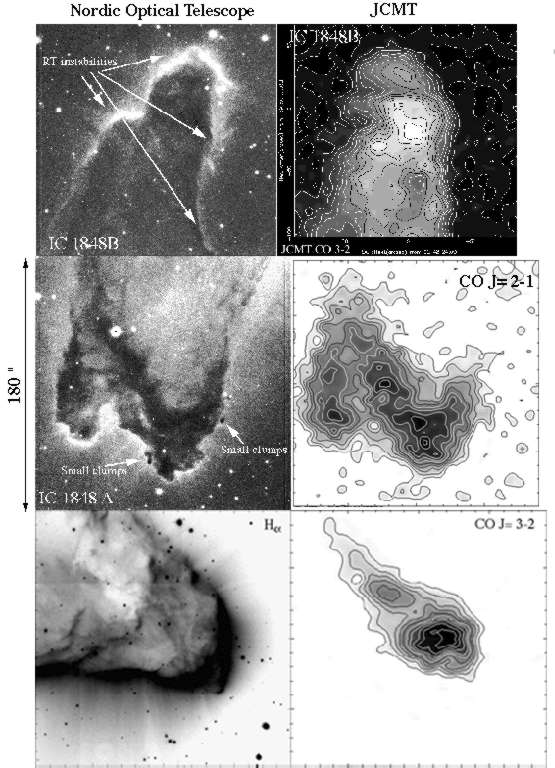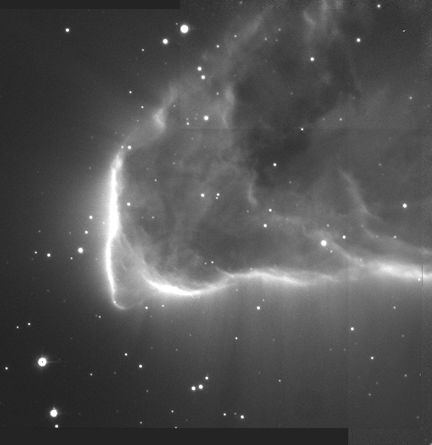|
||||
|
Bright Rim Clouds These are clouds of molecular gas whose outside edges are irradiated by the light of nearby young stars. This radiation results in the outer layers of the cloud becoming ionised, and the external pressure can lead to stars being induced to form inside the rims, as the overpressure drives a shock into the gas. Some examples of objects studied with the JCMT in Hawaii and at optical wavelengths are shown below:
The example below shows one of the objects in our narrow band imaging survey of bright rim clouds, carried out at the Nordic Optical Telescope at La Palma.
Apart from the ionised rim, clear evidence of striated rays is seen as gas streams off the ionised boundary. The effect of external radiation on a globule has been shown to lead to the Radiation Driven Implosion (RDI) of a cloud, followed by the formation of a dense core extended along the cloud's axis. This process occurrs in two phases; an early collapse phase as the effect of the ionising radiation compresses and ionises the globule, and a cometary phase in which the external ionised gas shields the tail from ionising radiation and pressure confines the head, leading to a long-lived head-tail morphology. During this latter phase of the globule's evolution, it moves away from the illuminating source at a velocity of km s . We, and others, have developed 2-D hydrodynamical simulations which describes the formation and evolution of a cometary globule as a consequence of a radiatively driven implosion. In this model, the cloud is treated as an isothermal sphere of cold dense gas, surrounded by a hot ambient medium initially in pressure equilibrium. |
|
|


